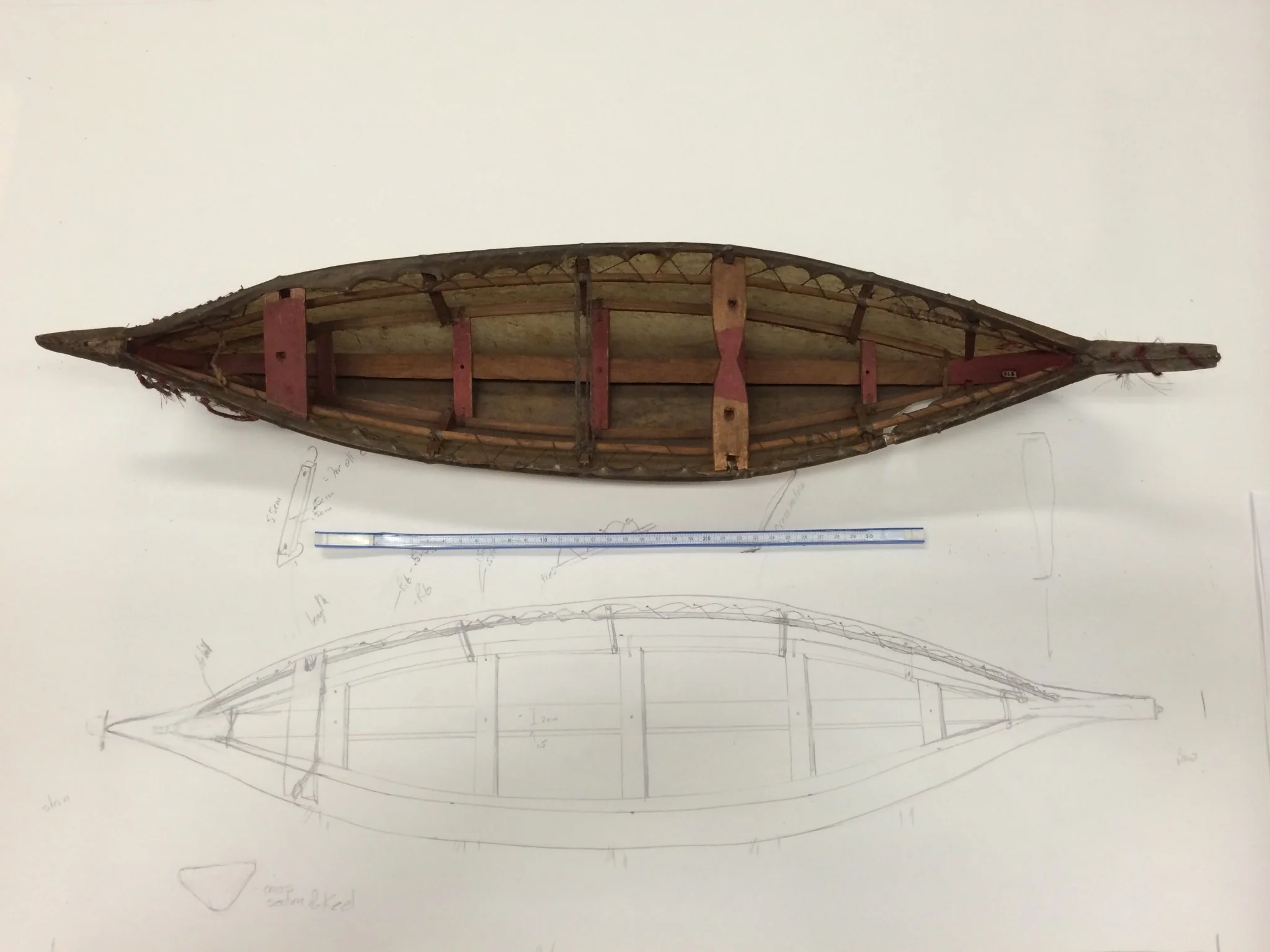John Webber. A View in Prince William Sound (Sandwich Sound), Alaska, with Indians in canoes appearing to address men in Cook’s Ships. 12-20 May 1778. Indian ink. British Library. Add. 15514, No. 9 © The British Library Board.
Sven Haakanson. ‘Youth from Akhiok Kids Camp paddling full-sized angyaaq’. 2015. Photograph courtesy of Sven Haakanson.
Sven Haakanson. 2014. Model Angyaaq. wood and skin. Photograph and model courtesy of Sven Haakanson.
As a Native growing up in the village of Old Harbor on Kodiak Island, Alaska I never knew that my Sugpiat ancestors made or used open boats, in Alutiiq they are called angyaat (open boats). We all knew that we had three, double and single person kayaks, but no angyaat. It was only in 1991, when I was living in Magadan, Russia and was on a tour at Leningrad when we visited the Museum of Anthropology and Ethnography that I saw on display an open boat model from Kodiak Island. Since this time I have researched museum collections and have only found 15 original angyaat models from Kodiak that are scattered in museums across the world. It would not be until the winter of 2013 that I had the time to research and reverse engineer an original model from the Burke Museum. I used this model frame to make angyaat kits that I would then use to teach youth at the Akhiok culture camp to make in the summer of 2014. After we had finished making 13 models at camp, our elder, Mitch Simeonoff Sr., asked me “why don’t we make a full sized one at camp next year?” I said “okay let's do it.” Using what I learned from helping make these model angyaat, I spent the following year gathering wood and carving the parts to make a full-sized Angyaaq first at the Burke Museum. I then used this knowledge in the summer of 2015 to help construct a full-sized angyaaq at the Akhiok Kids Camp at Cape Alitak, Alaska. We constructed the frame of a full-sized angyaaq in 2015 and then in 2016 we finished one at the Burke Museum and one at the Akhiok Kids camp. This would be the first time a full-sized angyaaq would be constructed and used on Kodiak since the 1860’s.
Angyaat are open skin-boats once found from the Alaska Peninsula, Kodiak Island, to the Prince William Sound region of Alaska. These vessels disappeared from use by the 1860’s during the Russian period. The Russians in control took and destroyed all the angyaat, because they could be used to transport large numbers of people away from them. Since this time, we have lost a tremendous amount of knowledge about our history and ways of life. If it wasn’t for museum collections the knowledge of this particular vessel would have been lost to time. It is because of museum collections we are now able to reverse engineer and construct Angyaaq in our communities again.
The drawing of the two angyaat by Webber in 1778 shows the Chugach from the Prince William Sound region coming in peace. Their hands raised and one appears to be holding a staff with eagle feathers on it. This signifies they are coming in peace. This is one of the first depictions of angyaat in historical accounts. There are no drawings of angyaaq from the Russian period, only kayaks.
Essay by Sven Haakanson


